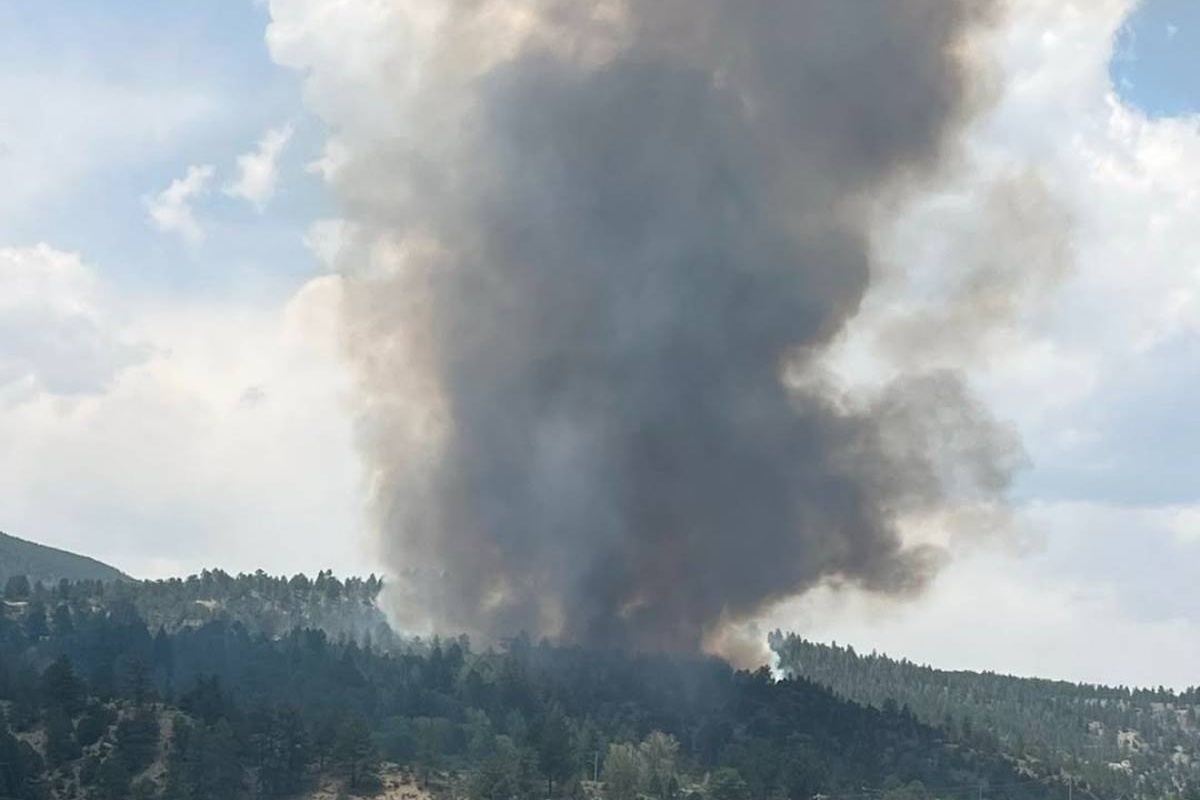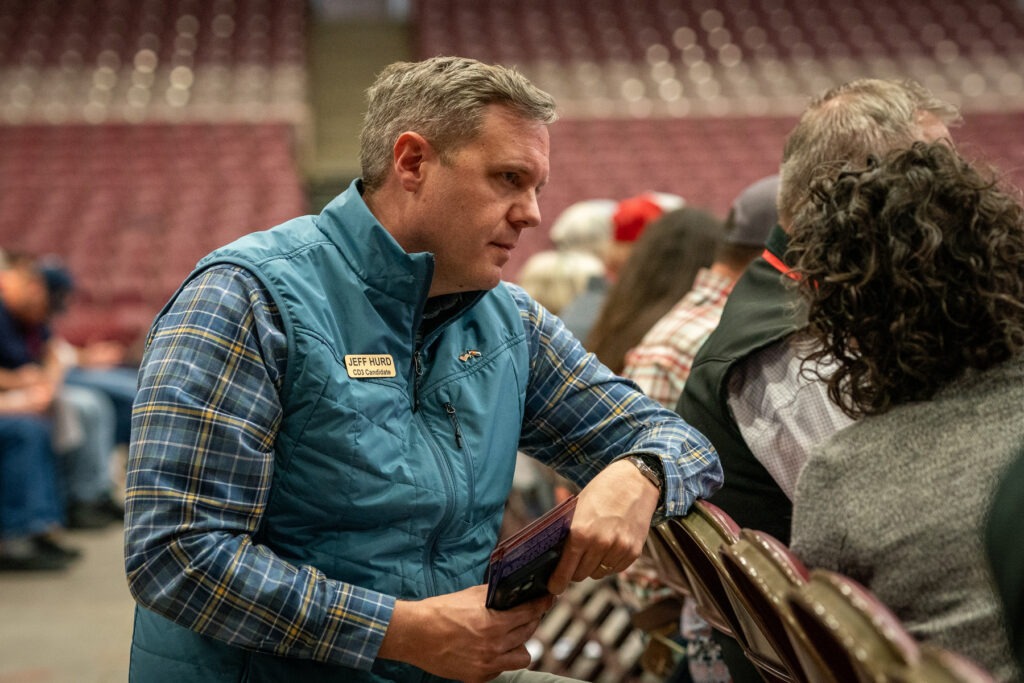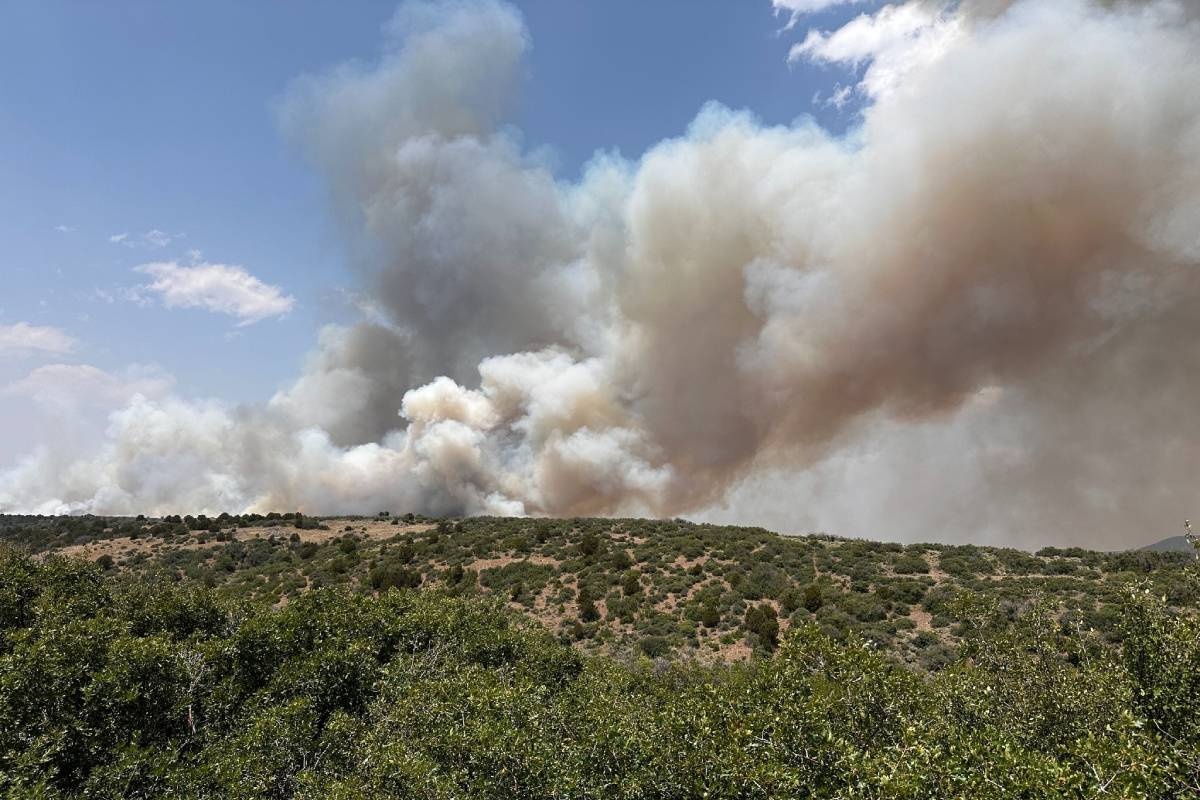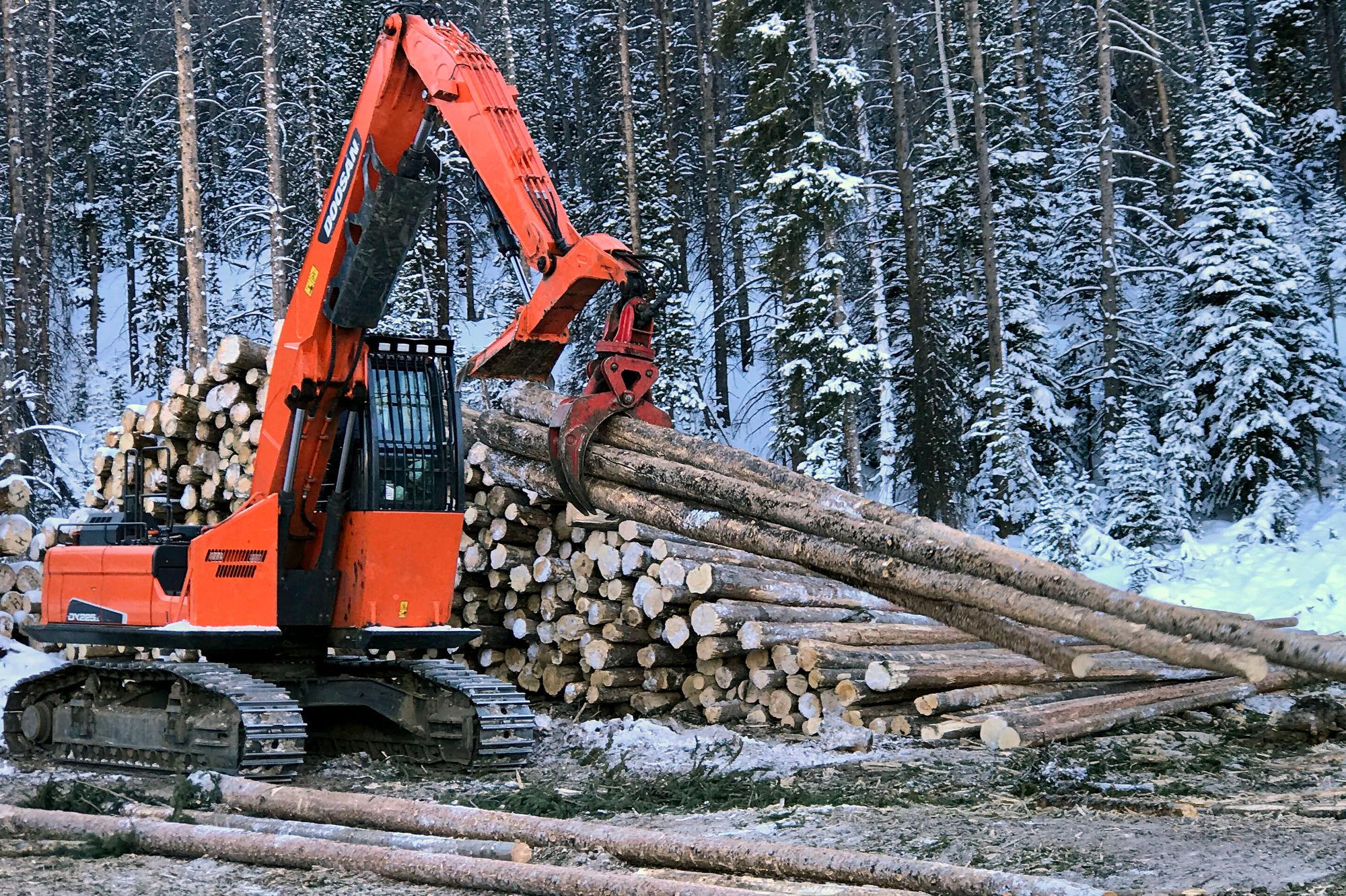
At the end of a snowy logging trail on Gould Mountain west of Rocky Mountain National Park, a clawed machine piles up hundreds of dead lodgepole pines. The trees, killed by the notorious mountain pine beetle, will be cut down and turned into two-by-fours to reduce wildfire fuel.
The Gould Crest project will remove dead trees from 328 acres of land. John Twitchell, a supervisor forester with the Colorado State Forest Service, pointed to clearings in the landscape where loggers have harvested trees.
“They blend right in with the meadows, you can't tell what's a meadow and what isn't,” Twitchell said. “If a fire comes ripping up this valley, it's going to have to stop for those openings.”
Logging is one way to remove excess fuel since these forests don’t burn like they used to. In the 1900s, local and national land managers started to suppress fire in areas that evolved with flames.
“Lodgepole, ecologically is developed to burn,” Twitchell said. “When we live here, you know, hundred-thousand-acre fires are no longer acceptable.”
The other way to remove fuel is to bring that fire back.
Prescribed burns require permits and specific weather conditions to be done safely. The National Park Service considers it one of the most important tools for forest health and for preventing wildfire destruction.
That means burning piles of debris, and also setting fire to aces of land — a procedure known as broadcast burning.
“The Colorado state forest service does not do that anymore,” Twitchell said.
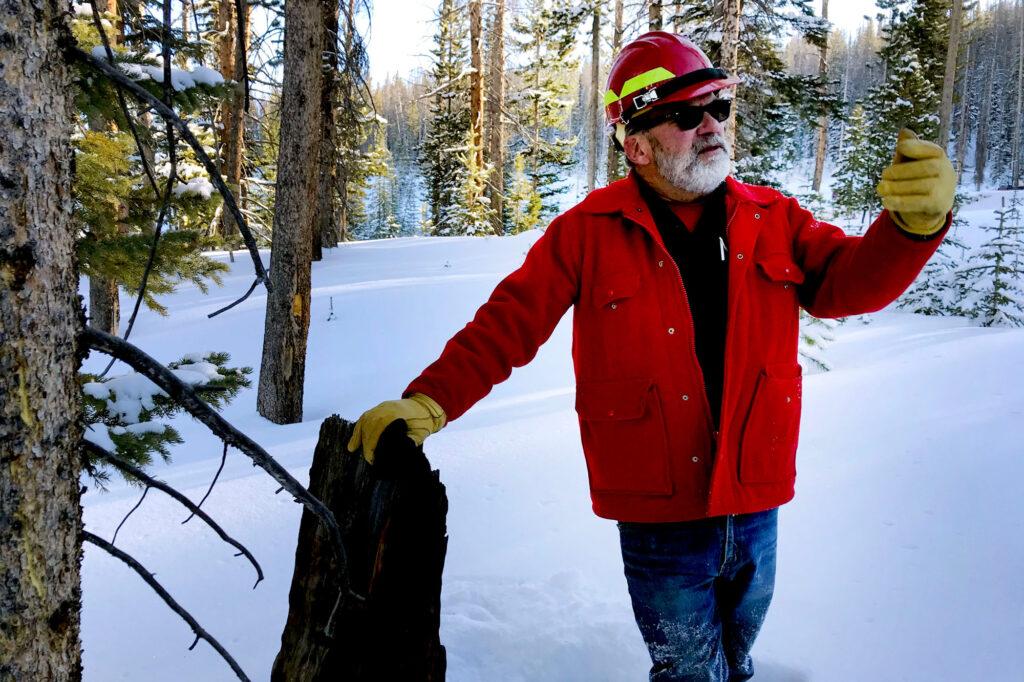
Burning authority
In March of 2012, the Colorado State Forest Service was managing a prescribed fire southeast of Conifer. The winds picked up on a hot and dry day, which started the Lower North Fork Fire. It killed three people, and destroyed nearly two dozen homes.
Colorado State Forester Mike Lester said the event was traumatic for many — agency staffers included.
“A lot of really good people really felt like their life's work was tarnished in some way,” Lester said. “And it was unfair because they applied the techniques at that point in time we thought were the right ways to do it.”
- When The Wilderness Meets The Urban, Homeowners And Neighbors Are On Their Own Against Wildfires
- Stronger Building Codes And Other Rules Can Save Homes From Wildfires. So Why Doesn’t Colorado Have A Statewide Law Mandating Them?
- Colorado’s East Troublesome Wildfire May Signal A New Era Of Big Fire Blow-ups
An independent review of the fire found no individual at fault. But victims criticized the review and wanted change. A bill was passed, which ended the state forest service’s authority to do prescribed burning. The agency’s fire unit employees were moved to the Division of Fire Prevention and Control.
Lester doesn’t think that the Colorado State Forest Service needs that authority reinstated.
“We would be happy to assist, but as far as taking the lead role again, there's no point in that because [the Division of Fire Prevention and Control] does prescribed fire.”
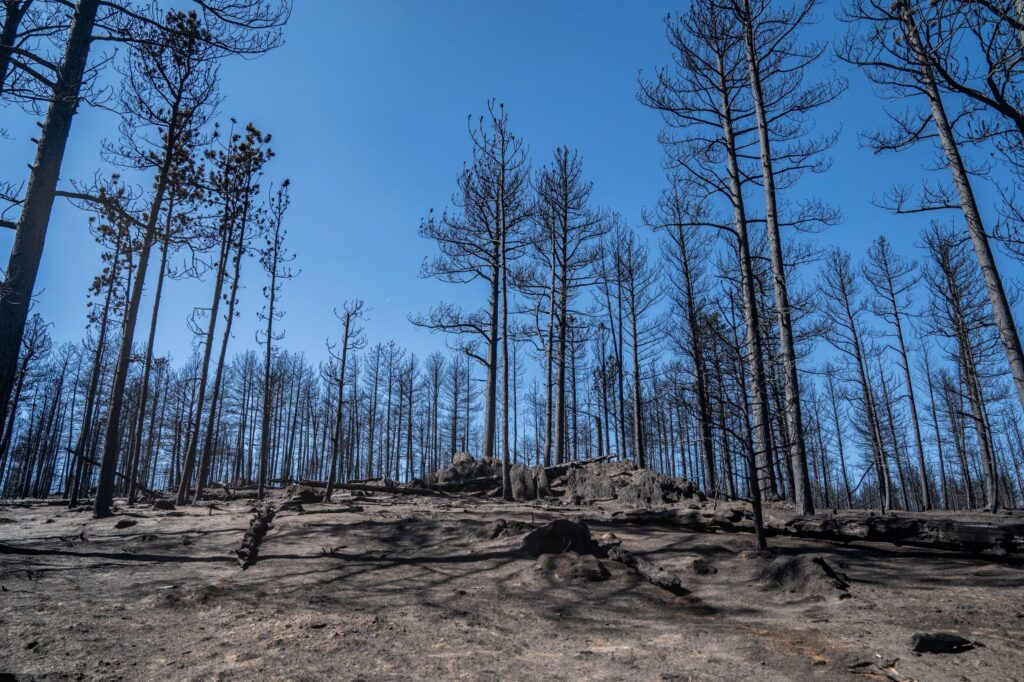
But the division is burning a lot less. Permit data from the state shows that Fire Prevention and Control burns about an eighth of the acreage each year that the Colorado State Forest Service once did.
Mike Morgan, the division director, said drier conditions fueled by climate change, including Colorado’s persistent drought, makes burning challenging.
“And the more homes we get in the areas where we would typically consider using fire as a tool, the more risk or hazard there is associated with using fire as a tool to do that,” Morgan said.
But federal agencies, like the U.S. Forest Service, are still conducting prescribed burns. Morgan said since the land they manage is further away from homes, it makes it easier for the federal agency to use fire as a tool. And that’s why the state has turned to more manual thinning, like the logging project on Gould Mountain.
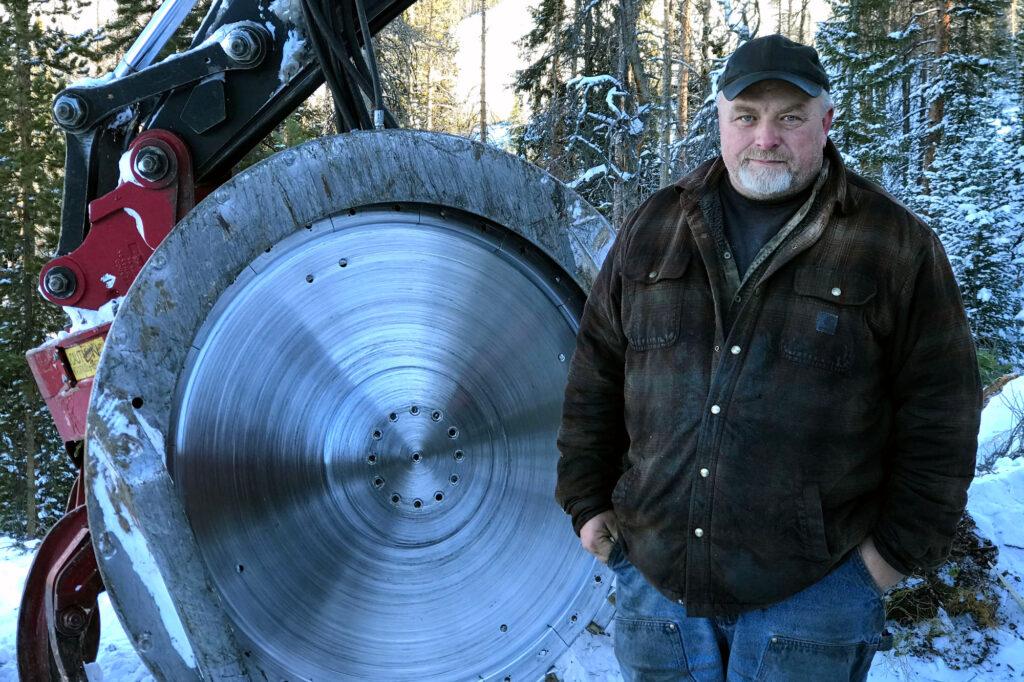
'You've taken an important tool out of the toolbox'
But former deputy state forester Joseph Duda doesn’t think that’s enough. Duda, who retired last year, wants to see the Colorado State Forest Service’s authority to burn reinstated.
“You've taken an important tool out of the toolbox,” Duda said. “When the tool is necessary, you've basically tied a hand behind their back.”
While Mike Morgan with fire prevention and control cites climate change and a growing number of people and developments crowding into wildland areas as reasons to do less burning, Duda sees those as the reasons to do more.
“How are we better off if we're doing less management?” Duda said. “Clearly we've had warmer and drier, more drastic conditions. The time now isn't to do less forestry, it's to do more forestry.”
Duda said Colorado’s forest service is one of the only state forest services that can't conduct prescribed burns. That also means the agency is not allowed to burn piles of thinned trees and brush for wildfire mitigation on private land.
“The state forest service is the forestry agency for private landowners, that's a significant ownership. There's six and a half million acres or so of private forest lands in Colorado,” Duda said.
While the State Forest Service is blocked from conducting prescribed fires, they haven’t stopped showing their support for its use. The agency’s latest Forest Action Plan calls for more of it in Colorado, which at this point is all the agency can do.

